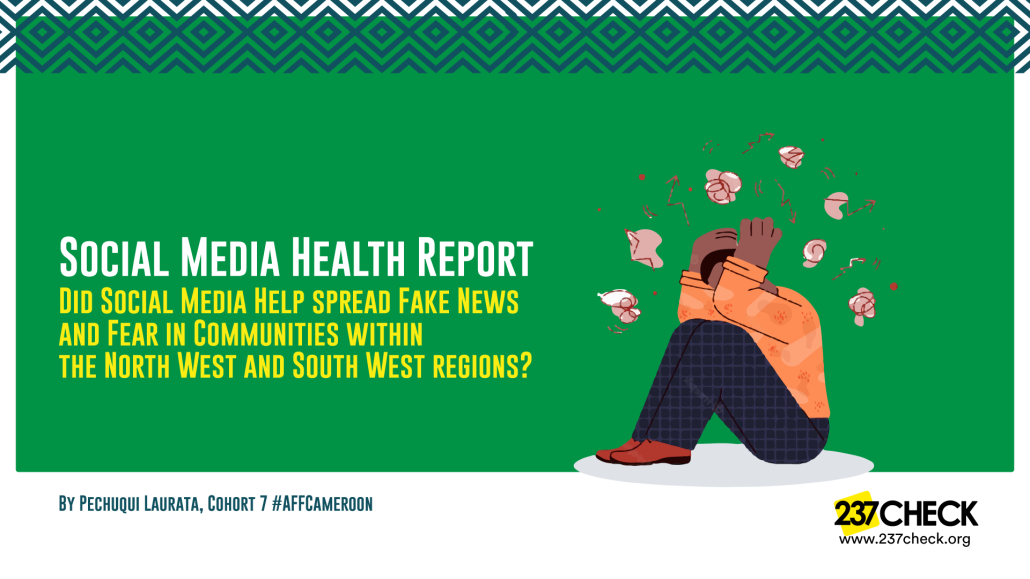By Pechuqui Laurata
Introduction
The modern society is witnessing a dramatic shift in information dissemination due to widespread adoption of social media. The advent of the internet and the subsequent advent of the social media age have greatly affected the process of information gathering, storing, processing and dissemination. With the liberalization of the media through access to a wider audience to non-traditional journalists through social media, such as Facebook, Twitter, Instagram and even WhatsApp, reporting is no longer the preserve of trained journalists. This has led to a lack of accountability because these independent reporters are not under any code of ethics or regulations
The quest to tell the story first in order to gather traffic or influence on one’s social media page remains a threat to truth, objectivity and accuracy. They either lack the capacity to verify the information they disseminate or they simply cater to a partisan agenda for personal gain. This independent or citizen journalists have been a big threat to unity in Cameroon especially with the ongoing crisis between the two regions.
Social media platforms such as Facebook, Twitter, and Instagram are the major channels for information sourcing and dissemination since 2016 to date in Cameroon especially in the North West and South West regions of Cameroon. The majority of the population relied on social media to obtain information of the crisis due to its ease of access and the lure of hardline secessionists through fake messages, audios and videos. Separatist groups have continuously practiced the act of distorting information to suit their agenda since the crisis started. For example the population of Bamenda carried a banner which read “The Population of Bamenda say No to Ghost towns” but the secessionists distorted the message to “The population of Bamenda say Yes to Ghost Towns”. These is just one example of disinformation shared by separatists on social media which has witnessed growing fear in communities, upsurge in violence and recorded deaths.
Development
The Anglophone Crisis in Cameroon that began in November 2016 could be traced back to the Foumban conference of 1961 where decisions taken purportedly didn’t favour the Anglophones as much as it did the francophones leading to simmering resentments in the Anglophones. In November 2016, lawyers and teachers took to the streets to protest against marginalization particularly in the education and legal sectors, by the Francophone-dominated government. They were also fighting for their identity which ever increasing being subsumed by the Francophone system. The protest turned violent in October 2017 when Separatist fighters under Sisiku Ayuk Tabe declared the two English-speaking regions as a country called Ambazonia which led to full armed conflict with the government.
Social media was and still is one of the channels used by secessionists, armed groups popularly called “Amba” and citizen journalists who support the secessionists as a strategy to recruit youth to their supporting their agenda and militia.
These groups started by circulating videos, text, pictures and audios of how lawyers, teachers and youths who joined the protest were manhandled during their protest on WhatsApp, Facebook and Twitter. The fearful communities then turned to these armed groups for protection and information as they gained us vs. them outlook further alienating both factions.
The ever graphic and violent videos deepened the crisis as they swayed the population to supporting the separatists and the battle for information rivalled the armed conflict in its destructiveness especially among the youth. The constant updates through audios, text, live and recorded videos fuelled the conflict and solidified hardlines and reached their peak before the government decided to act. In a quest to reduce mal-information, disinformation and misinformation in the two English speaking regions, the government initiated a complete shutdown of the internet from January 17th to April 20th 2017 (93 days).
The internet restrictions in the affected regions did not stop the secessionists abroad from sharing their objectives, aims, rules and regulations to the people using other means. Additionally, Anglophones living in other parts of the regions with internet connections copied and shared secessionist propaganda to the population of the restive regions via SMS.
For example, nine days after the internet was shut down by the government, two renowned secessionists; Mark Bareta and Ivo Tapang reported on January 27th 2017 that UNESCO had declared that it will not recognize school certificates issued that year in Cameroon.
https://www.bareta.news/certificates-cameroons-shall-not-recognized/
The secessionists were against school resumption in 2017 in a bid to paralyze education to push their agenda by making the government look ineffective to the global community. Such information was also carried by some bloggers on Facebook like the Cameroon Concord http://fb.me/1GwNechsD
The comment section of the fake news post published by Cameroon Concord on their Facebook page was followed by people promising to share the information to their various communities even by SMS adding to the 90 shares the post carried.
On 24th February 2017, a press release issued by UNESCO National Commission for Cameroon refuted claims but it only aggravated the situation as reported by Betatinz, (https://www.betatinz/com/2017/02/unesco-blank-school-year-cammeroon-html/)
See UNESCO’s Press Release below:
Misleading stories and publications shared on the social media space stirred up anger and provoked partisan sentiments and as a result, school enrollment between the year 2017 and 2022, dropped by 72% as reported by journal du Cameroon.com.
With the growing insecurity coupled with fear, school enrollment which stood at 220,000 in 2017/2018 in the Southwest and Northwest regions drastically dropped to 185,008 for the academic year 2018/19.
The citizen journalists also falsely reported that the Governor of the North West Region of Cameroon, Adolphe Lele L’afrique had been killed by separatist fighters on his way back from Ngoketunjia. One of them, a Facebook page Ambaland Africa, posted an image of a burnt man attaching the governor’s picture to it purporting that it was the Governor. Mimi Mefo of the Cameroon News Agency rebutted that The Governor’s convoy had been attacked but he was still alive but his death was used to drive a bigger rift between the two regions, increase their support https://www.facebook.com/652585094854545/posts/pfbid0ef18bFi4eQ3pUjDpZVi7xNi2FD4ZoqSspDxEHK7AtpZdKbXLziBJ1fTjehfo26gYl
The spread of fake news has created a problem in Cameroon especially in the Anglophone regions where people tend to believe fake news pushed by certain biased reporters instead of verified information and facts. The page below shows how the Anglophones mistrust the neutral media and tend to believe the fake news even after verification and fact checks.
Conclusion
All in all, the two instances of fake news shared above, are typical examples of multiple fake news shared by secessionists, non-traditional journalists, citizen journalists who support the crisis via social media mostly especially Facebook. Consequently creating fear amongst the population, tension in communities and insecurity which goes a long way to force them to make decisions that meets separatist objectives.
The social media campaign was just as destructive as the violent resistance since it hardened stances and turned ordinary citizens into hateful citizens who were easily lured to into joining the armed resistance as well as acting as conduits for the partisan agenda.
The deliberate distortion of facts to inflame and fuel tensions was successful and had the government not stepped in the situation would have been even worse showing the power of dis-information and mal-information towards destabilizing societies.
Recommendations
To the Government
- The government should collaborate with journalists to provide true and verifiable information that can be used to counter claims of fake news.
- The government should also act in an open and transparent manner to build public trust and encourage dialogue with dissatisfied citizens.
- The government should create an environment of free press in which critics are not shut down and targeted for reprisal but learn to take criticisms constructively.
To the Government, Journalist and Non-governmental Organizations
- The above should collaborate to create awareness on fake news and Continue to use the resources they have to educate the population most especially the youths on how to detect fake news. They should popularize the “ThinkBeforeYouClick” hashtag to urge the content creators to impart true and verified information.



